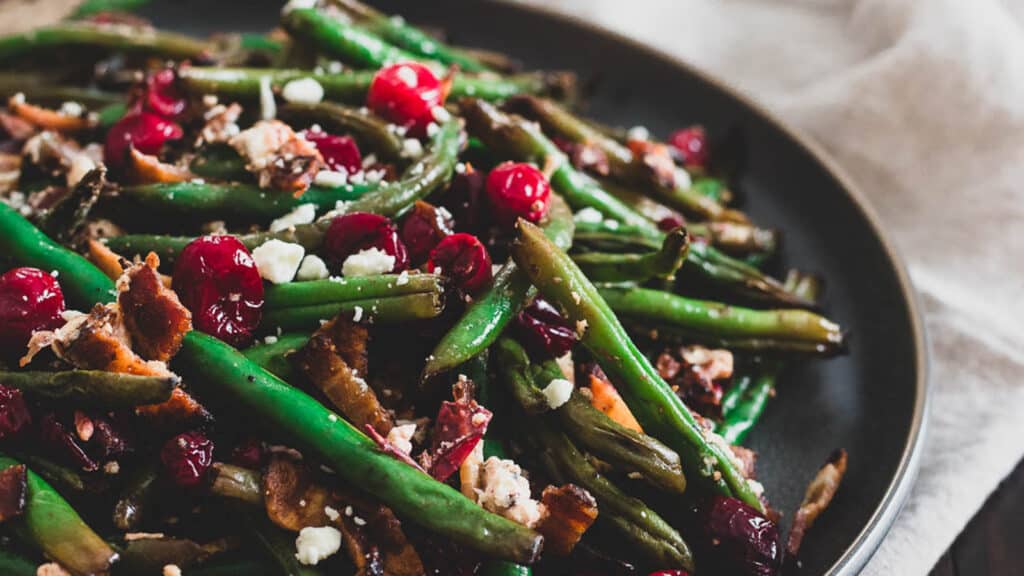Freezing green beans is an excellent way to preserve their fresh, vibrant flavor and texture long after peak growing season. You may have a surplus from your garden or found a great deal at the store; either way, freezing green beans can help you enjoy them throughout the year. In this guide, you will learn to properly freeze green beans, ensuring they retain color and flavor.

Freezing green beans: The basics
There are several methods for freezing green beans, each tailored to help maintain their quality and extend their shelf life. Follow these methods to keep your green beans tasting fresh for months to come.
Method 1: Freezing green beans whole
This is the simplest way to freeze green beans if you want minimal prep work.
Step 1: Wash the green beans thoroughly under cool, running water.
Step 2: Trim off the stems of the beans. You can then leave them whole or cut them into smaller pieces, depending on your preference.
Step 3: Lay the green beans out on a clean towel to dry completely, or pat dry thoroughly with paper towels.
Step 4: Once dry, pack the green beans into freezer-safe bags or containers. Remove as much air as possible before sealing to prevent freezer burn, then place in the freezer.
Method 2: Blanching green beans before freezing
Blanching green beans before freezing is a popular method to help preserve their bright color and flavor. This will also maintain the green bean’s texture better than fully cooked ones.
Step 1: Prepare an ice bath by filling a large bowl with ice and cold water.
Step 2: Rinse and trim the green beans.
Step 3: Bring a large pot of water to a rolling boil.
Step 4: Add the green beans to the boiling water and blanch them for two to three minutes, depending on their size.
Step 5: Immediately transfer the blanched beans to the ice bath to stop the cooking process. Leave them in the ice water for as long as they are blanched.
Step 6: Dry the green beans thoroughly before placing them in freezer-safe or reusable silicone bags. Remove as much air as possible before sealing.
Method 3: Freezing cooked green beans
If you prefer having fully cooked green beans ready to use, you can freeze them after cooking. This method is best for dishes where the texture does not need to be crisp.
Step 1: Cook the green beans by steaming or boiling them until they are tender but still slightly crisp, about three to five minutes.
Step 2: Allow the cooked green beans to cool completely. Pat dry.
Step 3: Place the cooled beans in freezer-safe bags or containers. Make sure to remove excess air from bags before sealing them tightly.

Using frozen green beans
The way you reheat and use your frozen green beans will depend on how they are prepared. Use the instructions below depending on the method chosen.
Whole green beans
Frozen green beans can be used straight from the freezer without thawing. Add them directly to stir-fries or pastas. They can also be thawed in the refrigerator overnight if you prefer, but tend to be softer in texture. Whole green beans work well in dishes where you want to maintain their consistency, such as simply prepared side dishes.
For example, saute the frozen green beans in olive oil with garlic, salt and pepper. Fresh herbs like thyme or parsley can add even more flavor.
Blanched green beans
Blanched green beans can be thawed in the refrigerator overnight or in the microwave on the defrost setting. They are great for recipes where the beans will be cooked further, such as stews, soups or casseroles.
However, blanched green beans retain a firmer texture compared to fully cooked ones, so they do not necessarily need to be cooked further. This texture makes them ideal for side dishes or salads.
“I always have a bag of pre-cut frozen green beans in my freezer. They’re perfect for tossing into cozy soups and stews, adding a nice texture without the prep work of fresh green beans. I especially love using them in hearty vegetable soups and quick stir-fries. My favorite type is blanched frozen green beans since they retain a bit of crunch and vibrant color after cooking.”
— Jacqui Wilson, Eat Fresh Glow

Cooked green beans
Fully cooked green beans can be thawed in the refrigerator or defrosted quickly in a bowl of cold water. They’re perfect for adding to recipes where you need pre-cooked vegetables, such as in casseroles, soups or baked dishes. To keep these these dishes fresh, add herbs and spices. Dill is an excellent flavor to pair with green beans.
“Frozen French-cut green beans are my secret weapon for Asian-inspired dishes. They stir-fry beautifully with tofu and a splash of soy sauce for an easy meal.”
— Mandy Applegate, Hungry Cooks Kitchen
Final thoughts
Freezing green beans is a smart and simple way to ensure you have access to this delicious vegetable throughout the year. Whether you decide to freeze them whole, blanched or fully cooked, each method has its own advantages depending on how you plan to use them. By following these easy steps, you can enjoy green beans in a variety of dishes, even when they’re out of season.
Gen is a professional chef, writer and editor living in Southern California. She is the owner and recipe creator behind Two Cloves Kitchen, a food site featuring contemporary, California-inspired recipes. She has edited over 20 novels, short stories and essays for publication.